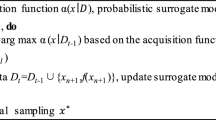Abstract
Pressure die-casting condition selection mainly relies on the experience and expertise of individuals working in production industries. Systematic knowledge accumulation regarding the manufacturing process is essential in order to obtain optimal process conditions. It is not safe a priori to presume that rules of thumb, which are widely used on the shop floor, always lead to fast prototype production calibration and to increased productivity. Thus, neural network meta-models are suggested in this work in order to generalise from examples connecting input process variables, such as gate velocity, mould temperature, etc., to output variables, such as filling time, solidification time, defects, etc. These examples, or knowledge, are gathered from experiments conducted on casting simulation software, which are designed systematically using orthogonal arrays (DoE). They could also be based on experiments from industrial practice. Neural models derived in this way can help in avoiding excessive numbers of what-if scenarios examined on the casting simulation software, which can be very time-consuming. Furthermore, they can be employed in the fitness function of a genetic algorithm that can optimise the process, i.e. yield the combination of input parameters which achieves the best output parameter values.
Similar content being viewed by others
References
Hu BH, Tong KK, Niu XP, I Pinwill (2000) Design and optimisation of runner and gating systems for the die-casting of thin-walled magnesium telecommunication parts through numerical simulation. J Mater Process Technol 105(1–2):128–133
Campbell J (2000) The concept of net shape for casting. Mater Des 21(4):373–380
Yarlagadda PKDV, Khong CAT (2001) Development of a hybrid neural network system for prediction of process parameters in injection molding. J Mater Process Technol 118:110–116
Webster CAG (1995) The use of images in a language- and culture-independent expert system for diagnosing pressure die-casting defects. J Mater Process Technol 55(3–4):296–302
Yarlagadda PKDV (2000) Prediction of die-casting process parameters by using an artificial neural network model for zinc alloys. Int J Prod Res 38(1):119–139
Tai C-C, Lin JC (1998) A runner-optimisation design study of a die-casting die. J Mater Proc Technol 84(1–3):1–12
Tai C-C (2000) The optimisation accuracy control of a die-casting product part. J Mater Process Technol 103(2):173–188
Santos CA, Spim JA, Garcia A (2003) Mathematical modeling and optimisation strategies (genetic algorithm and knowledge base) applied to the continuous casting of steel. Eng Appl Artif Intell 16(5–6):511–527
Shi X, Chen J, Yang H, Peng Y, Ruan X (2002) A novel approach to extract knowledge from simulation results 20(5):390–396
Giannakakis T, Mylhäuser S, Vosniakos G (2003) Intelligent systems for evaluation of gravity casting quality. In: Proceedings of the International Conference on Virtual Engineering Applications for Design and Product Development, Dublin, Ireland, 2003, pp 216–225
Montgomery DC (2000) Design and analyses of experiments, 5th edn. Wiley, New York
Condra LW (1993) Reliability improvement with design of experiments. Dekker, New York
Fausett L (1994) Fundamentals of neural networks. Prentice-Hall, New York
Demuth H, Beale M (1992–2002) Neural Network Toolbox User’s Guide Version 4. The Mathworks Inc, USA
Mitchell M (1999) An introduction to genetic algorithms. MIT Press, Cambridge
Chipperfield A, Fleming P, Pohlheim H, Fonseca C (1994) Genetic Algorithm Toolbox User’s Guide Version 1.2. University of Sheffield, UK
Author information
Authors and Affiliations
Corresponding author
Rights and permissions
About this article
Cite this article
Krimpenis, A., Benardos, P., Vosniakos, GC. et al. Simulation-based selection of optimum pressure die-casting process parameters using neural nets and genetic algorithms. Int J Adv Manuf Technol 27, 509–517 (2006). https://doi.org/10.1007/s00170-004-2218-0
Received:
Accepted:
Published:
Issue Date:
DOI: https://doi.org/10.1007/s00170-004-2218-0




